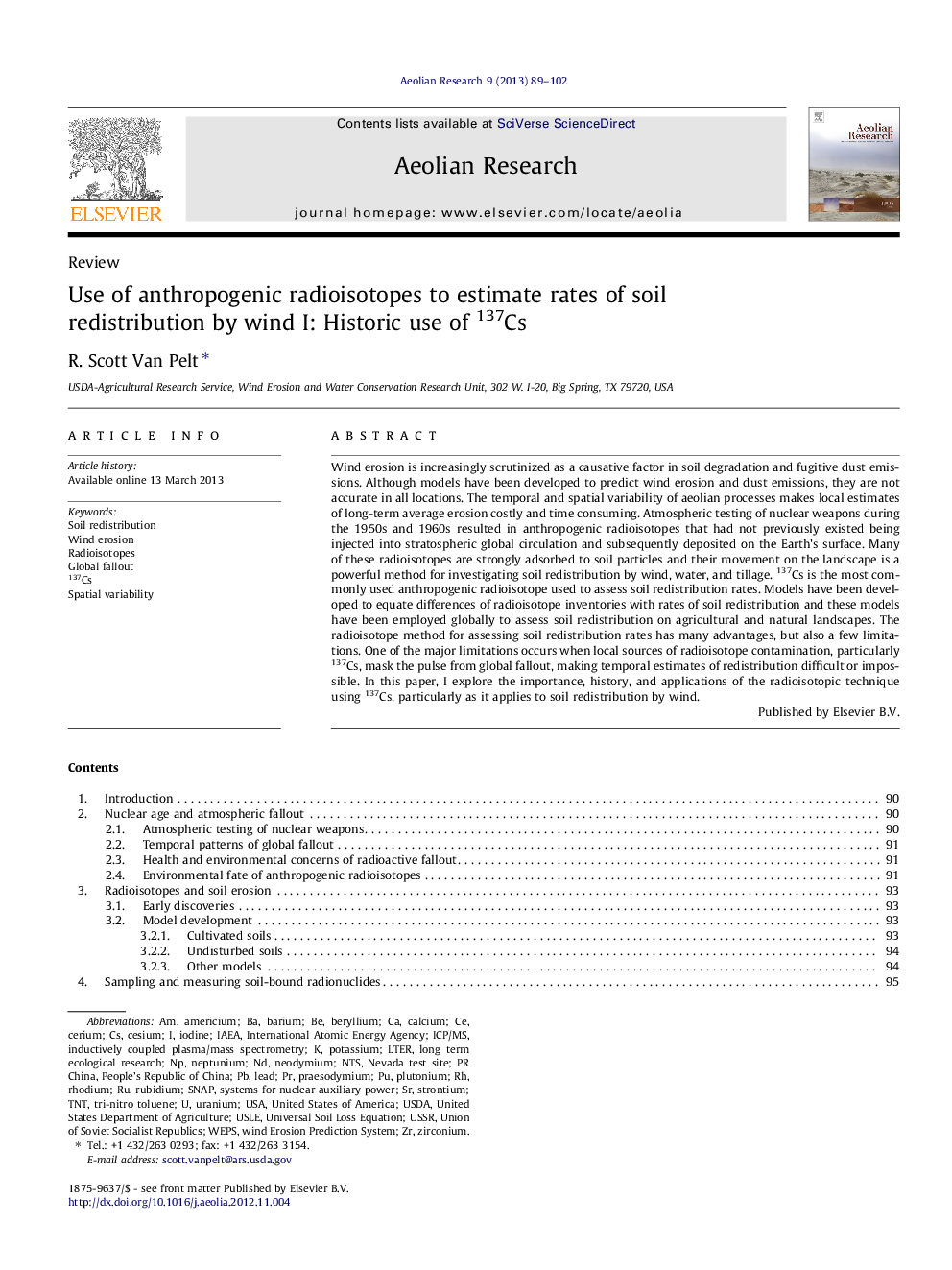| کد مقاله | کد نشریه | سال انتشار | مقاله انگلیسی | نسخه تمام متن |
|---|---|---|---|---|
| 4673837 | 1634118 | 2013 | 14 صفحه PDF | دانلود رایگان |

Wind erosion is increasingly scrutinized as a causative factor in soil degradation and fugitive dust emissions. Although models have been developed to predict wind erosion and dust emissions, they are not accurate in all locations. The temporal and spatial variability of aeolian processes makes local estimates of long-term average erosion costly and time consuming. Atmospheric testing of nuclear weapons during the 1950s and 1960s resulted in anthropogenic radioisotopes that had not previously existed being injected into stratospheric global circulation and subsequently deposited on the Earth’s surface. Many of these radioisotopes are strongly adsorbed to soil particles and their movement on the landscape is a powerful method for investigating soil redistribution by wind, water, and tillage. 137Cs is the most commonly used anthropogenic radioisotope used to assess soil redistribution rates. Models have been developed to equate differences of radioisotope inventories with rates of soil redistribution and these models have been employed globally to assess soil redistribution on agricultural and natural landscapes. The radioisotope method for assessing soil redistribution rates has many advantages, but also a few limitations. One of the major limitations occurs when local sources of radioisotope contamination, particularly 137Cs, mask the pulse from global fallout, making temporal estimates of redistribution difficult or impossible. In this paper, I explore the importance, history, and applications of the radioisotopic technique using 137Cs, particularly as it applies to soil redistribution by wind.
Highlight
► Wind erosion is highly spatially and temporally variable, making estimates of mean rates difficult.
► Soil-bound anthropogenic radioisotopes from atmospheric fallout allow estimates of decadal mean redistribution rates.
► 137Cs has been the most commonly used radioisotope, but, for many reasons, another radioisotope must be identified.
Journal: Aeolian Research - Volume 9, June 2013, Pages 89–102